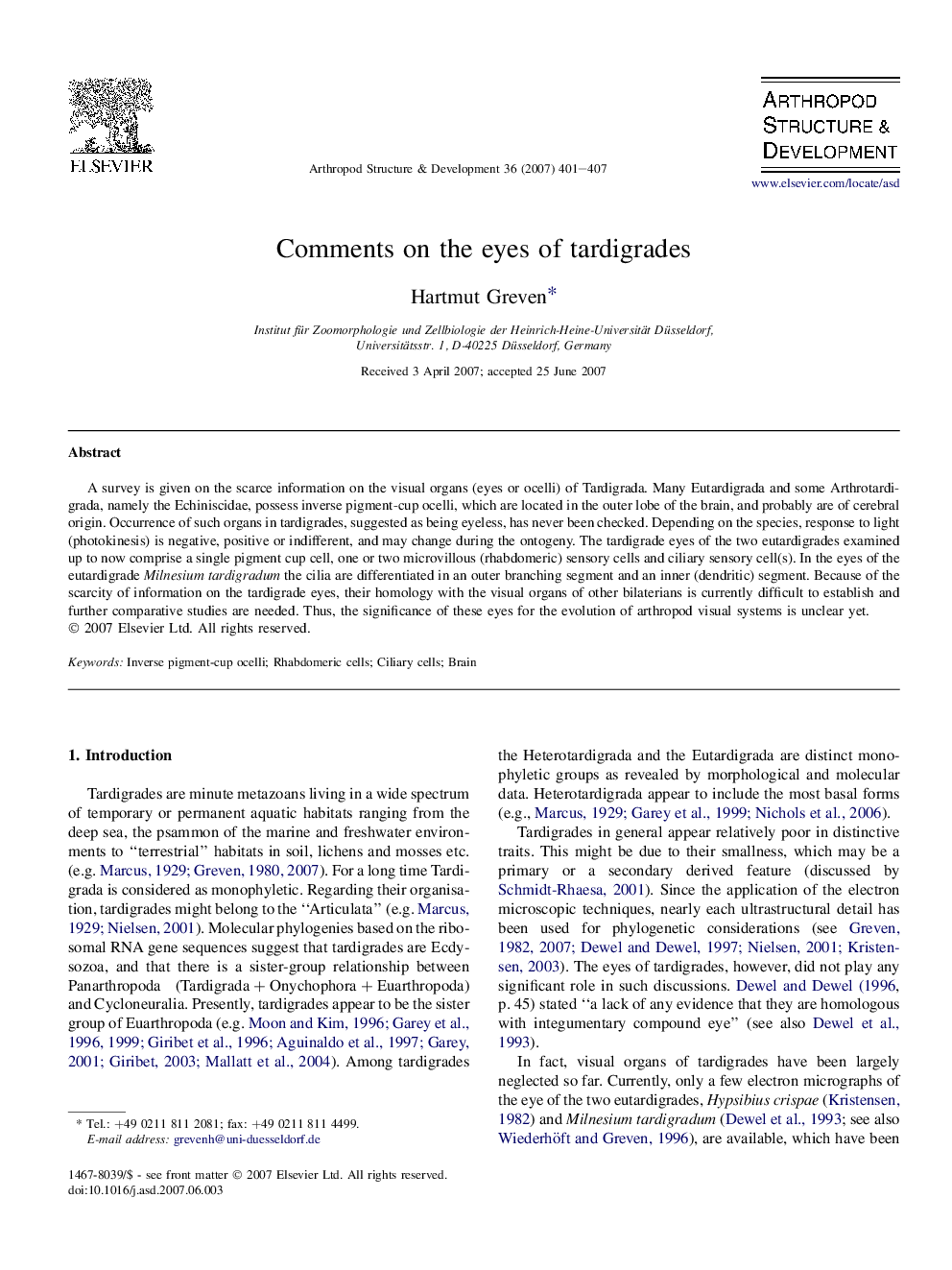| Article ID | Journal | Published Year | Pages | File Type |
|---|---|---|---|---|
| 2779020 | Arthropod Structure & Development | 2007 | 7 Pages |
A survey is given on the scarce information on the visual organs (eyes or ocelli) of Tardigrada. Many Eutardigrada and some Arthrotardigrada, namely the Echiniscidae, possess inverse pigment-cup ocelli, which are located in the outer lobe of the brain, and probably are of cerebral origin. Occurrence of such organs in tardigrades, suggested as being eyeless, has never been checked. Depending on the species, response to light (photokinesis) is negative, positive or indifferent, and may change during the ontogeny. The tardigrade eyes of the two eutardigrades examined up to now comprise a single pigment cup cell, one or two microvillous (rhabdomeric) sensory cells and ciliary sensory cell(s). In the eyes of the eutardigrade Milnesium tardigradum the cilia are differentiated in an outer branching segment and an inner (dendritic) segment. Because of the scarcity of information on the tardigrade eyes, their homology with the visual organs of other bilaterians is currently difficult to establish and further comparative studies are needed. Thus, the significance of these eyes for the evolution of arthropod visual systems is unclear yet.
